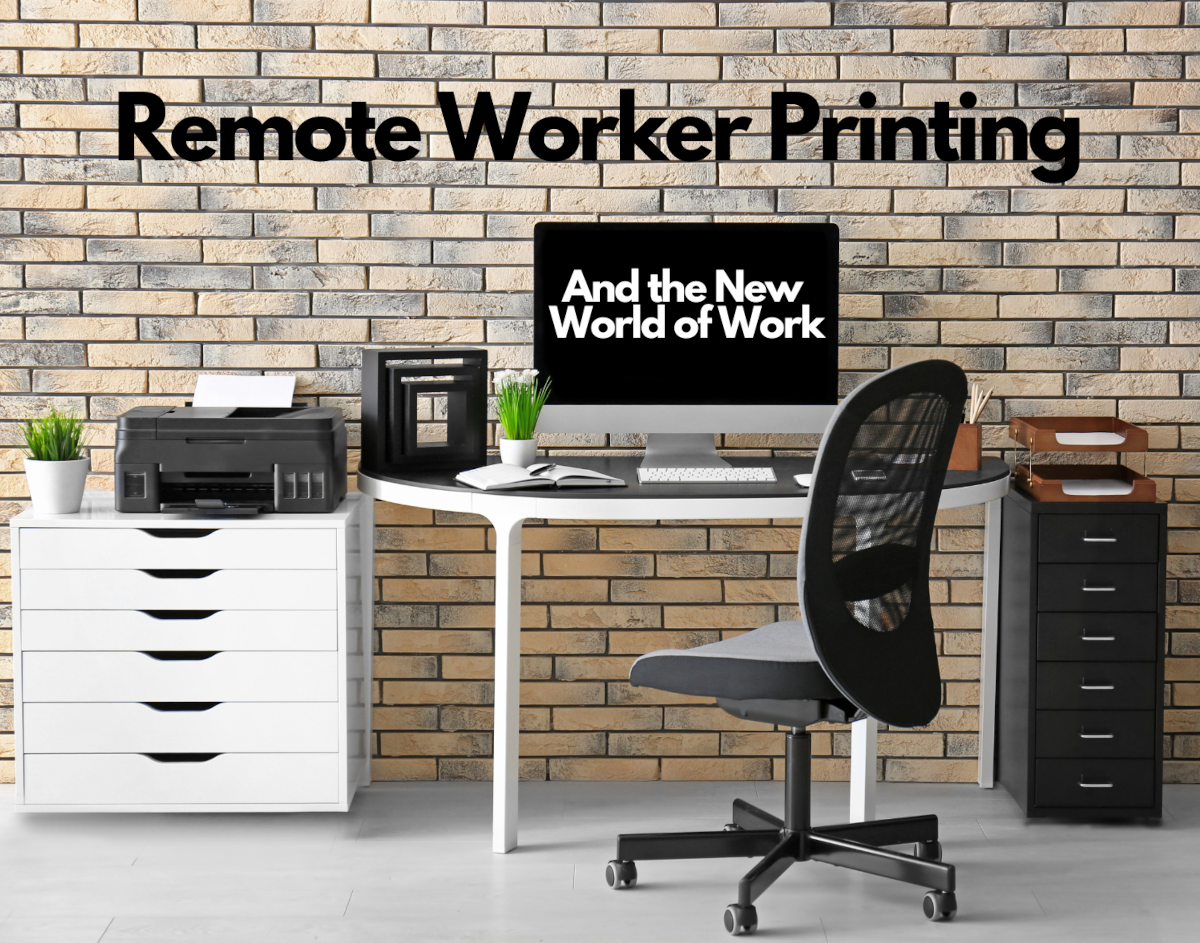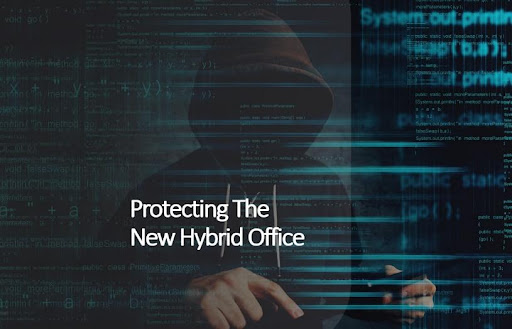Remote Worker Printing and the New World of Work
December 27th, 2022 by Kevin Box

Prior to COVID, printer fleets were mostly hybrid, meaning organizations deployed both larger workgroup copiers in specific locations around their office to maximize employee usage with some select employees having a desktop printer on their desk. After COVID, workers have transitioned more and more to a remote working model where the home office is their new workspace. What does this mean for the hybrid approach to using workgroup devices going forward? In this article, we explore how this has changed the old floor mapping approach and what it means moving forward in the New World of Work.
Before COVID, organizations were moving away from a 1:1 ratio with printers and towards a floor mapping approach that placed workgroup copiers in specific locations around the office space to maximize employee printing. However, COVID dispersed many office workers to more of a remote model which has led organizations to rethink how they print.
Since the mid-2,000's, the industry has been promoting the concept of the "New World of Work" which does away with the 1:1 ratio of every worker having their own office/cubicle space, computer, printer, etc., and instead started moving to a more common space approach with shared cubicles, common workstations, and smart lockers. This approach, however, was being integrated slowly to the point that it was a future concept and not necessarily a present reality. However, COVID propelled technology forward some three to five years because workers suddenly needed to work primarily from home which meant organizations had to scramble to setup the proper infrastructure to support these remote locations, which had a big effect on how the new mobile worker prints. Instead of larger, console type models, organizations begin buying desktop models that could be drop shipped to the employee's home offices. This meant organizations had to find new ways to allow these workers to print securely and economically. However, the big problem was that no one knew the best practices around buying printers, so many went out and purchased printers that were meant for home use instead of enterprise-based models.
Printers that you can buy from Office Depot or Staples are not the type of printer you need in an enterprise environment. Over-the-counter-printers are more expensive to operate with no security built into the device. Below are several guidelines you should follow when looking to buy a printer for a remote employee.
1. Go with Enterprise Level Printers - When looking to buy a printer for a remote employee, you should first look to go with an enterprise level device, because of higher yielding toner cartridges. This means you pay much less for each print because the cartridge yields higher print volumes and is typically only marginally higher in price.
2. Don't take Security for Granted - Even though printing volumes may be low for one employee working out of their home office, you should not become laxed with security. Enterprise level devices come with security built into the device at the BIOS level. Today's printers are more like computers with the same components, e.g., the devices will have a User Interface, a Hard Disk Drive, and will allow for access to the Internet to name a few similarities. This means a printer can be hacked just the same as a computer, so having the right security built in means the printer is less vulnerable to being hacked. Security is also more effective with more layers, so buying printers with built-in security will add security layers to your network.

3. Go with LaserJet Printers - If you need a printer for general office printing, then a LaserJet device should be your choice. LaserJet's are cheaper to run and slightly better for the environment because of higher yielding cartridges which means you need to buy less of them. On the other hand, if you need high resolution color prints, then a smaller Inkjet device could be the best choice. However, Inkjet devices are not manufactured to print high volumes, so you need to consider the quality of the print versus cost and the need to buy a new Inkjet printer more often because the device will wear out faster with volumes outside its volume rating. If you need to print large volumes of high-resolution prints, you may be better off outsourcing this to a local printer who would be able to produce better-quality prints at a lower cost.
4. Printing Alternatives - Office workers will sometimes print a document so they can view it while also viewing their computer screen, instead of jostling back and forth between two documents. This sounds trivial, however many do it. One way to eliminate this unnecessary printing habit is to purchase your remote workers a secondary monitor so they can pass opened documents to the second monitor for side-by-side-viewing. The cost of the monitor would be absorbed quickly by the savings of not printing and your return on investment will compound thereafter.
In the ever-changing workplace, printing is still an important part of the workflow, however it can be done smarter and cheaper when just a few best practices are implemented.
If you have any questions concerning this article or would like to have one of Function4's Managed Print Services Specialist conduct a Cost Benefit Analysis on your printer fleet, reach out to me directly and I will connect you with a member of our team. I can be reached at kbox@function-4.com.
Posted in: Managed Print Services

